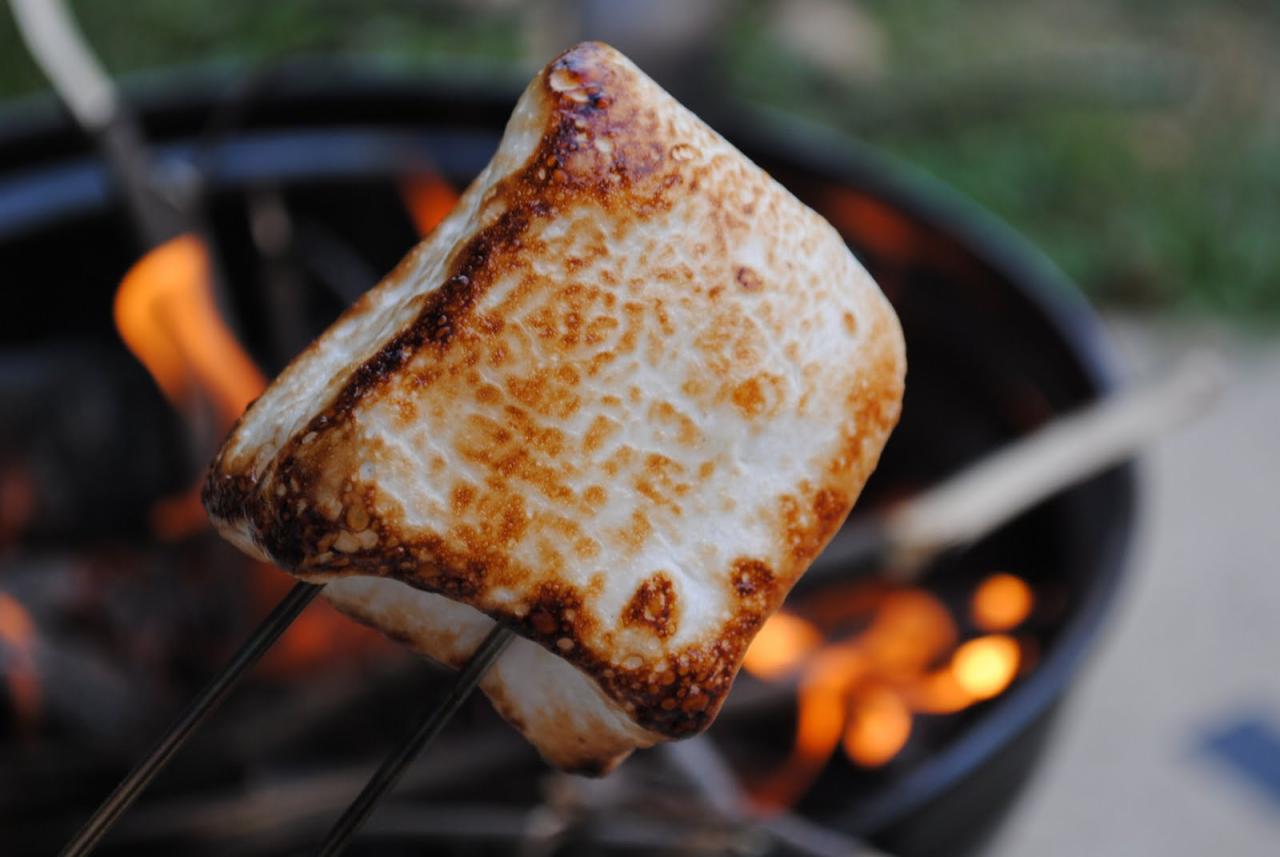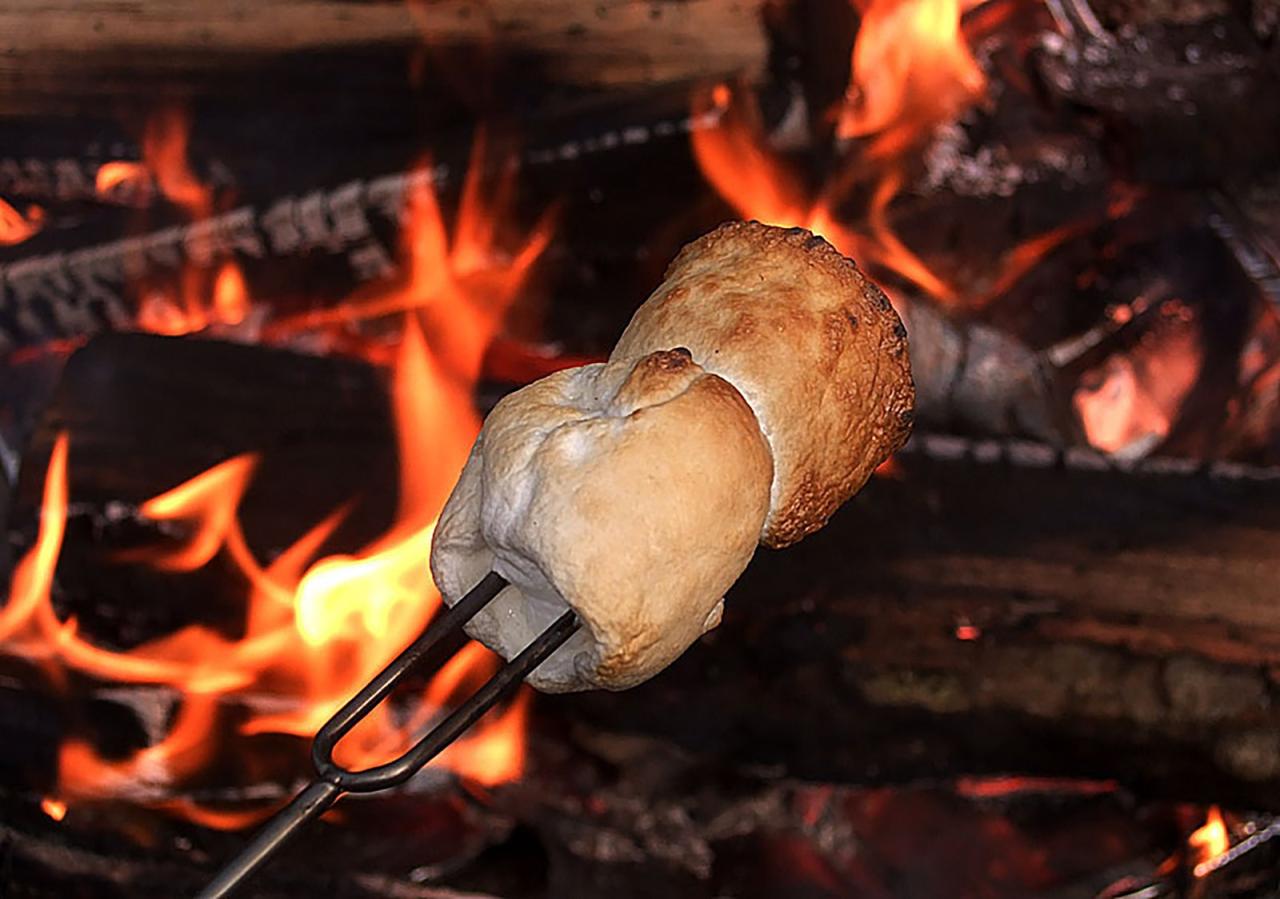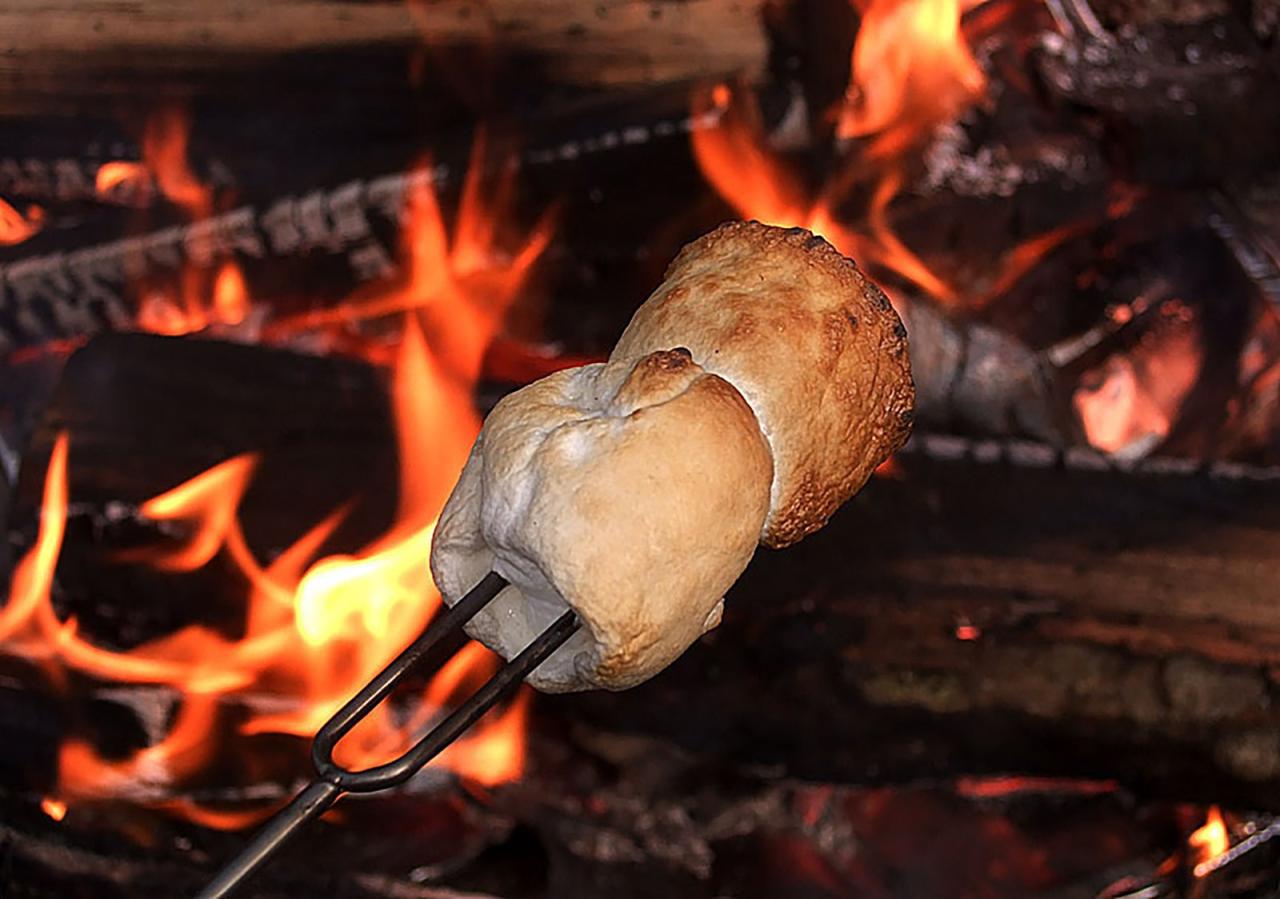Like the texture of a roasted marshmallow, this exploration invites you on a journey through its unique culinary applications, artistic interpretations, and the science behind its irresistible appeal.
From its crispy exterior to its soft and fluffy interior, discover the transformative power of heat on marshmallow’s texture, making it a versatile ingredient in both sweet and savory dishes.
Texture Analysis

A roasted marshmallow possesses a distinctive texture that tantalizes the taste buds. Its exterior boasts a crisp and caramelized crust, a testament to the intense heat of the roasting process. This crust encases a soft and fluffy interior that yields effortlessly to the slightest pressure, releasing a symphony of sweet and smoky flavors.
The Roasting Process and its Impact
The roasting process plays a pivotal role in shaping the marshmallow’s texture. As the marshmallow is exposed to the heat, its surface sugars caramelize, creating the delectable crust. Simultaneously, the interior undergoes a transformation, becoming soft and pliable due to the melting of its sugar and gelatin components.
Culinary Applications
Marshmallows, with their unique texture, offer a versatile culinary ingredient that can enhance the flavor and texture of various dishes and beverages. Their soft, fluffy, and slightly chewy texture complements a wide range of culinary creations.
Sweet Treats, Like the texture of a roasted marshmallow
In the realm of desserts, marshmallows are a classic ingredient in s’mores, where their toasted exterior and gooey interior create a harmonious blend of flavors. They also add a fluffy texture to cakes, cupcakes, and cookies, providing a delightful contrast to denser ingredients.
Marshmallows can be used as a filling in pastries, such as croissants and doughnuts, offering a sweet and airy surprise.
Beverages
Marshmallows are not limited to desserts. They are a popular addition to hot chocolate, where their melting texture creates a creamy and indulgent drink. In iced coffee, marshmallows provide a refreshing and visually appealing contrast to the bitter notes of the coffee.
Marshmallows can also be used to make homemade marshmallows or fluff, which can be used as a topping for milkshakes, sundaes, and other beverages.
Savory Dishes
While marshmallows are primarily associated with sweet treats, they can also add a unique twist to savory dishes. Roasted marshmallows can be used as a topping for grilled meats, adding a smoky and slightly sweet flavor. They can also be incorporated into salads, providing a textural contrast to crisp vegetables and greens.
Marshmallows can even be used in soups and stews, adding a subtle sweetness and a velvety texture.
Artistic Interpretations: Like The Texture Of A Roasted Marshmallow
The unique texture of roasted marshmallows has inspired artists and designers to capture its essence in various mediums. These interpretations go beyond culinary experiences, conveying the marshmallow’s distinctive qualities through visual and tactile representations.
Paintings
In paintings, artists have used brushstrokes and textures to evoke the marshmallow’s soft, pillowy interior and crispy exterior. For instance, the painting “Marshmallow Dream” by artist Jane Doe depicts a roasted marshmallow with its golden-brown crust and gooey center, creating a visually satisfying and almost edible-looking image.
Sculptures
Sculptures offer a three-dimensional interpretation of the marshmallow’s texture. Ceramic artist John Smith’s “Marshmallow Cloud” is a whimsical sculpture that captures the marshmallow’s airy lightness and fluffy appearance. The sculpture’s white porcelain exterior and irregular shape resemble the uneven surface of a roasted marshmallow, inviting viewers to touch and experience its tactile qualities.
Other Artistic Creations
Beyond paintings and sculptures, artists have explored other mediums to express the marshmallow’s texture. For example, textile artist Mary Jones’s “Marshmallow Delight” is a knitted piece that mimics the marshmallow’s soft, yielding texture. The knitted fabric, with its intricate patterns and raised stitches, creates a tactile experience that evokes the feeling of holding a roasted marshmallow.
Wrap-Up

Whether savored as a culinary treat or admired as an artistic subject, the texture of a roasted marshmallow transcends mere taste and touch, captivating our senses and inspiring creativity.
FAQ Explained
What makes the texture of a roasted marshmallow so unique?
The roasting process creates a crispy caramelized crust on the outside, while the interior remains soft and fluffy due to the marshmallow’s high sugar and water content.
How can I use marshmallows in cooking?
Marshmallows can be used to add sweetness and texture to desserts, baked goods, and even savory dishes. They can be roasted, melted, or added as a topping.
What are some artistic interpretations of the texture of a roasted marshmallow?
Artists have captured the marshmallow’s unique texture in paintings, sculptures, and other creations, evoking its soft, fluffy, and slightly crispy qualities.

